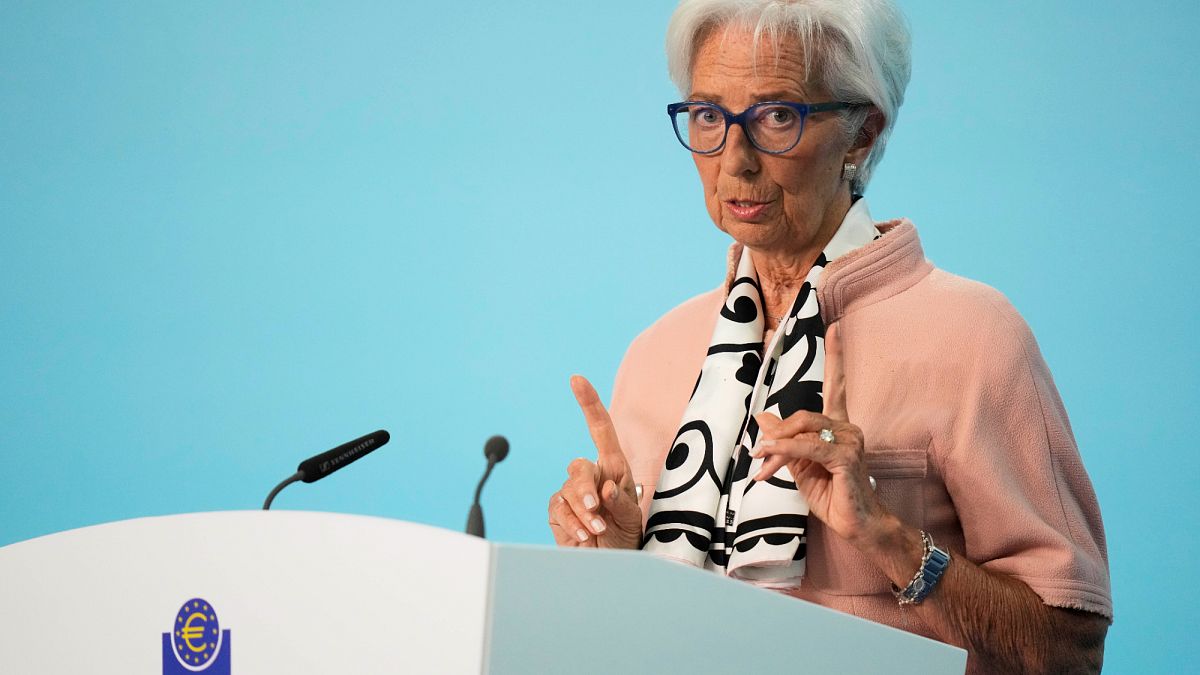The eurozone economy posted a stronger-than-expected performance in the first quarter of 2025, with growth largely driven by investments and exports, reinforcing expectations that the European Central Bank (ECB) will adopt a more cautious approach to further rate reductions.
Gross domestic product (GDP) in the euro area expanded by 0.6% quarter-on-quarter, marking the fifth consecutive quarter of expansion, according to Eurostat’s third estimate released on Friday.
This figure represents an upward revision from the previous 0.3% estimate and marks the highest quarterly growth rate since the third quarter of 2022.
For the broader European Union, economy also grew by 0.6% in the first quarter.
On an annual basis, GDP grew by 1.5% in the euro area and by 1.6% across the European Union in the first quarter of 2025. This comes after a quarterly growth of 0.3% in the euro area and 0.4% in the EU during the final quarter of 2024.
Among member states, Ireland recorded the most significant quarterly GDP increase, surging by 9.7%, followed by Malta (+2.1%) and Cyprus (+1.3%). On the other end, the largest contractions were observed in Luxembourg (-1.0%), Slovenia (-0.8%), and both Denmark and Portugal (each -0.5%).
Investments and exports drive growth
Household final consumption expenditure rose by 0.2% in both the euro area and the EU, a slowdown from the 0.5% and 0.6% increases recorded in the previous quarter, respectively. Government final consumption expenditure remained stable in the euro area but declined by 0.1% in the EU, following respective increases of 0.4% and 0.5% in the fourth quarter of 2024.
Gross fixed capital formation posted strong growth, rising by 1.8% in both the euro area and the EU, marking a notable acceleration from the previous gains of 0.7% and 0.6%.
Exports also rebounded, increasing by 1.9% in the euro area and by 1.6% in the EU, after recording marginal growth of 0.0% and 0.1% in the preceding quarter. Meanwhile, imports rose by 1.4% in both regions, recovering from the 0.1% decline observed in the prior period.
ECB turns cautious on rate cuts
The stronger economic performance was released just one day after the ECB announced its eighth rate cut in the current cycle, lowering the deposit facility rate by 25 basis points to 2%.
Yet, during the press conference, ECB President Christine Lagarde signalled caution, repeatedly affirming that the Governing Council is in a “good position” to handle prevailing uncertainties.
The ECB’s macroeconomic projections remained largely unchanged from March. Real GDP is expected to expand by 0.9% in 2025, 1.1% in 2026 and 1.3% in 2027. Meanwhile, headline inflation is forecast to average 2.0% in 2025, dip to 1.6% in 2026, and return to 2.0% in 2027.
Employment sees modest uptick, retail trade volume edges higher
In a separate release, Eurostat reported a 0.2% quarter-on-quarter rise in the number of employed persons in the euro area, slightly revised down from the previous 0.3% estimate.
Employment remained stable in the EU. Year-on-year, employment increased by 0.7% in the euro area and by 0.4% in the EU during the first quarter of 2025.
April’s seasonally adjusted retail trade volume rose marginally by 0.1% month-on-month in the euro area and by 0.7% in the EU, offering early indications of consumption trends in the second quarter.
July cut off the table
Economists and market analysts reacted swiftly to the signals from Lagarde and the stronger-than-expected GDP figures.
“We no longer expect a July cut,” said Goldman Sachs economist Sven Jari Stehn, interpreting Lagarde’s remarks as a sign that a pause is now the baseline scenario.
Goldman Sachs now sees the ECB’s final rate cut taking place in September, although it expects economic activity to soften and core inflation to trend lower than the ECB’s forecasts over the summer.
ING’s global head of macro, Carsten Brzeski, concurred, stating: “Comments from the ECB’s press conference suggest Board members are in no hurry to cut rates again at the July meeting – unless there is a new escalation of trade tensions.”
BBVA echoed the sentiment, concluding: “We now consider the rate-cutting cycle to be finished at the current level. The ECB appears comfortable pausing from here unless financial conditions deteriorate.”
The ECB’s June move can be labelled as a “hawkish cut” by Gian Marco Salcioli, Head of Global Markets Strategy at Intesa Sanpaolo.
“The pandemic phase taught us how little it takes to reignite inflationary pressures,” Salcioli noted, adding that “prudence is necessary – the pace of cuts seems to be shifting toward a wait-and-see approach.”

